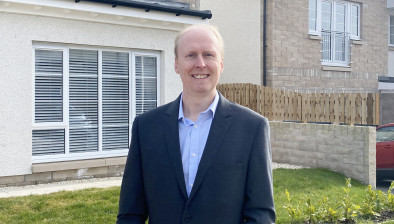Pension funds ‘could play vital role’ in building Scotland’s social housing supply
Pension funds could have an important role to play in providing a share of the investment necessary to build the supply of social housing required in Scotland, according to the Scottish Banking and Finance Group (SBFG).

Writing in The National newspaper, Jim Osborne said pension fund investment in social housing provision is a long-term, stable source of income, derived from the rents paid by social housing tenants.
“The need for housing does not fluctuate with the economic cycle, and so investment in housing carries a low risk matched by a stable revenue stream over a long time period,” he said. “It is normal for pension funds to include stable and predictable assets in their investment portfolios, and social housing has the advantage of being a cash flow-rich asset and should be treated as such, rather than as a tradable financial asset.”
Local authority pension funds receive their income from pension contributions out of local council tax and central government grants. Mr Osborne highlighted that together, the 11 Local Government Pension Scheme (LGPS) funds received £1.45 billion in pension contributions in 2019/20 and control assets with a total value of £45.5bn.
He added: “The LGPS has both the firepower and the public responsibility to support the building of the social housing stock we need in Scotland. In saying this, we are not advocating that pension funds should become developers or landlords themselves, but that they commit to providing investment to local authorities or housing associations to enable these providers of housing to build the stock of social housing that communities need. In return, pension funds benefit from the revenue streams derived from social housing rents.”
Mr Osbrone also believes local authorities should be given powers to borrow themselves by issuing local authority or municipal bonds should Scotland become an independent nation. This, he argues, would be a low-risk asset suitable for pension funds to buy, thereby providing the funding for local authority spending, including spending on social housing.
“In this scenario, pension funds derive investment income from interest payments made on the bonds, with the local authority income to pay the interest being derived from rents,” he added.
Mr Osborne said: “Meanwhile, our local authority pension funds have the capacity to support the expansion of Scotland’s social housing stock. It is our locally elected councillors who sit on the pension committees of the 11 LGPS funds. It seems unlikely that the financial professionals working in LGPS fund management or as advisers to the funds will take the view that investing in social housing sits well within current investment mandates. However, investment mandates are ultimately set by pension committees. What we need our elected representatives to do is redefine the mandates they set.
“Elected councillors on pension committees need to be asking their advisers, ‘how can our pension fund help provide the investment needed to support our productive economy, and to provide the infrastructure and housing we need in order to make the transition to a zero-carbon economy in the shortest time possible, whilst also fulfilling our duty to the beneficiaries of the fund?’ The answers to this question are what will define the investment mandates which direct how pension funds invest in the future.
“LGPS fund investment mandates can be changed now. This doesn’t have to wait until independence, and if mandates are changed now, so that pension funds provide investment in our economy, infrastructure and housing, Scotland will reach the start of our post-independence journey from a much stronger position.”
Going even further, Mr Osborne has championed the introduction of a single national pension fund for Scotland where social housing rents and other day-to-day spending by households will benefit all members. The move would go some way to address one of the underlying causes of social inequaility he said but admits the idea is “for the future”.







